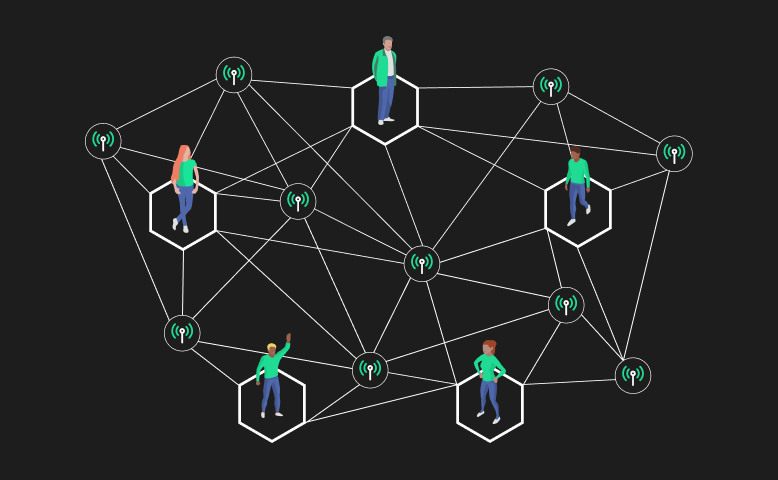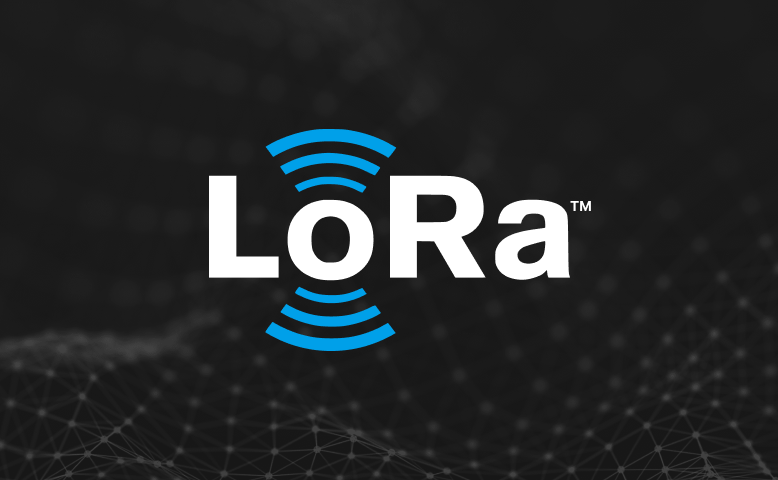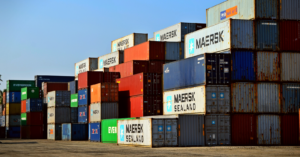 With technological advances in blockchain, logistics networks are benefitting from improved efficiency, organization, and connectivity. Why should you care? Because investing in networks that can positively impact the logistics industry (and, thereby, the global supply chain) is about as smart of an investment as you can make at this moment in time.
With technological advances in blockchain, logistics networks are benefitting from improved efficiency, organization, and connectivity. Why should you care? Because investing in networks that can positively impact the logistics industry (and, thereby, the global supply chain) is about as smart of an investment as you can make at this moment in time.
As secure connectivity around the globe improves, more and more logistics systems and individuals will come to rely on blockchain networks, thereby increasing the value of your hard-earned crypto – especially in the case of Helium.
In today’s blog we will:
- Explore how blockchain technology can improve logistics systems
- Explain how new blockchain networks like Helium are impacting efficient logistics through smart connectivity
- Introduce you to Emrit’s profit-sharing model, to allow you to take full advantage of the amazing growth potential of Helium
Blockchain, Logistics, Organization: Systems in Need of Change
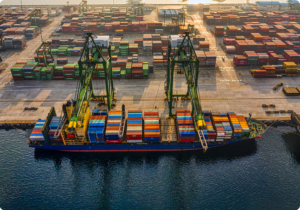 You’ve no doubt been impacted by logistics shortcomings over the last few months: they’ve become a hallmark issue of the pandemic, impacting everything from online retailers to your local grocery stores. Logistics problems can seem strangely frustrating in a world where people across the globe have come to expect some level of constant availability and immediate service.
You’ve no doubt been impacted by logistics shortcomings over the last few months: they’ve become a hallmark issue of the pandemic, impacting everything from online retailers to your local grocery stores. Logistics problems can seem strangely frustrating in a world where people across the globe have come to expect some level of constant availability and immediate service.
But even before the pandemic, logistics problems persisted across some industries. Overhauling an ailing global system will require an infusion of new thought and streamlined thinking – the kind that blockchain networks can provide.
Blockchain technology is about more than moving paper transactions to a digital ledger. Blockchain enables every part of a logistics process – from the shipping process to the delivery process to be more efficient for all parties involved.
Global shipping providers and logistics companies, like DHL, are already starting to take advantage of blockchain-backed logistics systems to guarantee immediate, secure data transmissions between the various parts of a logistics chain, using distributed ledger technology. Smart contracts are powering improved communication between various sectors.
And that kind of innovation is only the beginning. With blockchain, a more efficient logistics world is possible, one in which supply chains are optimized and processing and administration costs (and even the transportation costs) for global shipments are dramatically decreased. And the beauty of blockchain is that it promises to help small trucking companies as much as conglomerates with multiple stakeholders.
A major requirement for logistics systems of all sizes is connectivity. Providing low-cost, energy-efficient, immutably secure internet access to IoT systems and human users will be an integral part of the blockchain transition in the logistics world. And there’s a blockchain network already dedicated to providing exactly that.
Helium and Blockchain Logistics
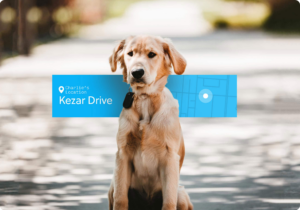
In its current form, the Helium network is an IoT network. IoT stands for Internet of Things and refers to connectivity between non-human interfaces and devices. A smart home, designed around communication between sensors, is a great example of a simple IoT setup. But Helium is already starting to expand its innovative approach into 5G coverage for users worldwide.Helium is “The People’s Network.” Driven by the Helium blockchain and decentralized infrastructure, it provides low-power network coverage to billions of devices that need a connection to transmit data between one another.
Devices that tap into the Helium network to transmit data between one another are guaranteed secure information exchange and immutability, thanks to blockchain technology. That makes the Helium network not only a neat alternative to centralized coverage structures but essential infrastructure for better global logistics.
The good news is that nothing needs to change in established infrastructure to allow sensors, devices, or people to tap into Helium’s “LongFi” network. Using energy-efficient radio technology, Helium has a low carbon footprint and is incredibly cost-effective.
Helium relies on distributed infrastructure. By connecting an access node to your power and home network, you provide coverage for the Helium network to your local area. Companies like Emrit work to get that infrastructure out to people – in a subsidized, profit-sharing way.
Emrit and the CoolSpot
 Emrit is a distributed blockchain infrastructure company. We aim to build the physical infrastructure of the next generation of the internet, all while creating income opportunities for consumers and businesses through cryptocurrency mining.
Emrit is a distributed blockchain infrastructure company. We aim to build the physical infrastructure of the next generation of the internet, all while creating income opportunities for consumers and businesses through cryptocurrency mining.
Emrit has quickly become a leading miner of Helium in the world. That amazing development has been fueled by our CoolSpot devices, which plugs into your power (using only the equivalent energy of a 5W lightbulb) and connects to your home WiFi.
Emrit subsidizes half the cost of expensive equipment, you provide your physical location. Then, we split the HNT profits 50/50. Think of it as a long-term investment in a project we believe in – one that will become more and more profitable for you the earlier you begin mining with us.
Why are we interested in distributing this simple infrast ructure around the world? We think it’s essential to growing the Helium network – and a key requirement for making it a globe-spanning vessel for logistics connectivity.
Summary: With Blockchain, Logistics Can Be Re-Designed
Any way you slice it, blockchain technology has the potential to revolutionize global trade and logistics. That’s partly because of its inherent advantages (secure data transmission, immutable ledger), and partly because it can be used to harness infrastructure requirements in whole new ways.
A blockchain-backed global wireless network, driven by individuals, not corporations, is a powerful idea. Imagine how logistics networks could benefit from access to secure internet everywhere and anywhere. Your part in that game-changing proposition is clear as day: host a helium hotspot and benefit from an ever-growing valuation of the world’s first people-powered network.
In today’s blog we:
- Explained how incorporating blockchain in logistics is already impacting the world
- Explored how blockchain solutions like Helium can improve global logistics
- Introduced Emrit’s profit-sharing Helium mining model, and invited you to become a part of its long-term profitability
No matter whether or not you’re intimately familiar with the intricacies of blockchain technology, you can get started on your crypto journey by helping us build the next generation of global digital infrastructure today!
Be sure to check out other blog posts for detailed guides to understanding blockchain technology, the Helium network, and Emrit’s mission. Then become a member for free and follow our Discord channel for community-wide info sessions.

